Image
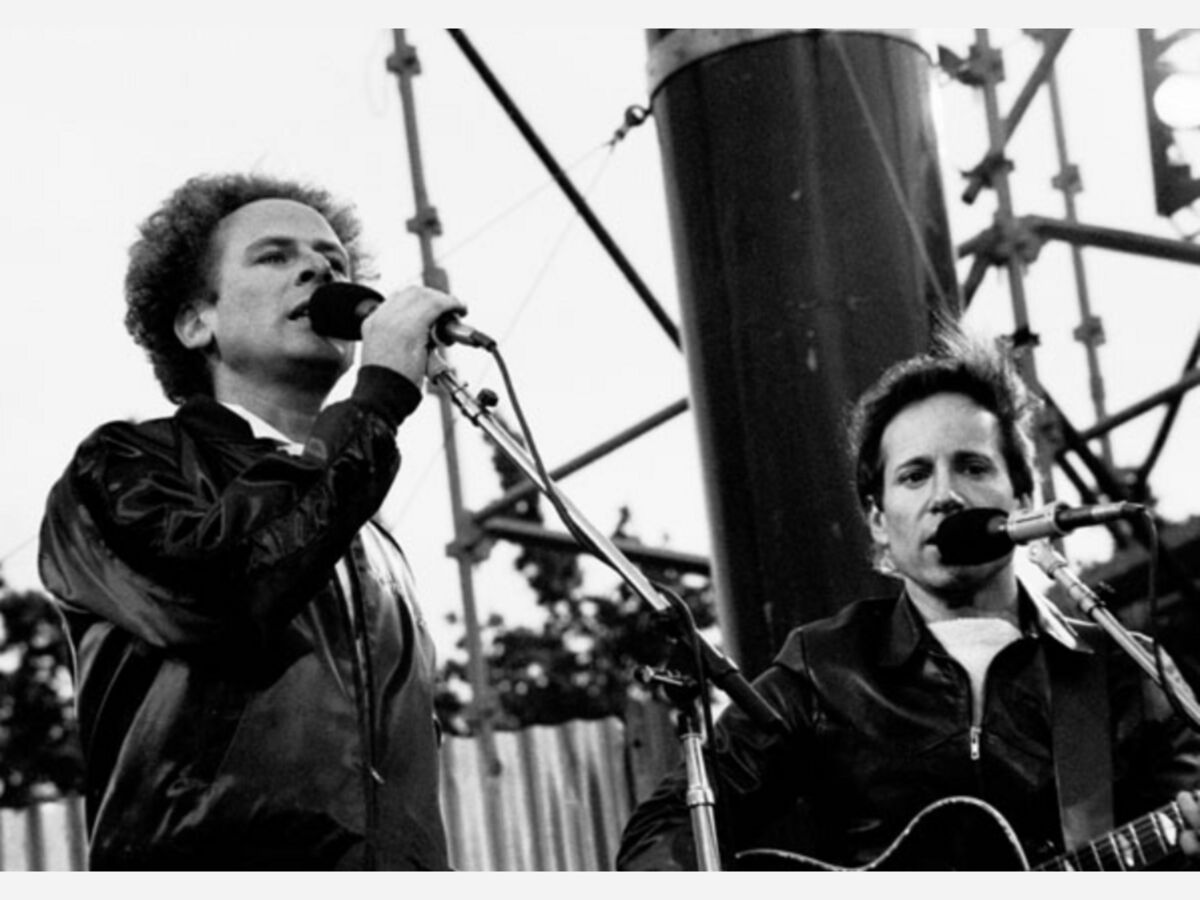
Photo by Eddie Mallin, CC BY-SA 2.0 via Wikimedia Commons. Singer-Songwriter duo Simon & Garfunkel performing outside at a concert in Dublin.
By Joseph Bien-Kahn from Stacker
"Old" people complaining about "the music these days" is a trope for a reason: it's been happening for as long as music has been on the radio. The fact is, the music we fall in love with as teenagers stays with us for the rest of our lives.
A New York Times analysis of Spotify data found that the most influential age for one's musical taste is 13 for women and 14 for men. At that formative moment, music just means more: Each of those songs becomes linked with events that feel monumental (First dance! First kiss! First beer! First love!). According to the study, if you were an 11-year-old girl when The Cure's “Just Like Heaven” was released, you stream it all the time. But if you were older than 20 or younger than 5 at the time? It's just “meh.”
Pop music is about a time, a place, and what a song or a band can mean to a generation of listeners. Because of that, it can be anything from an orchestral movie theme to a remix of a Spanish-language hit to a folk harmony to a Dolly Parton cover. What makes it pop is that it speaks to young people of the day. And because those are the songs that stay with us, pop music becomes a shared language for a generation.
So, what's your pop music dictionary? What are the songs that are part of your teenage cohorts' shared language and experience?
Stacker pulled data from Billboard’s year-end charts, which ranks #1 singles, albums, and more of the calendar year, to compile a list of the #1 pop song for each year from 1946 to 2021. Whether you love pop music or hate it, these are the hits that dominated the car radios, the winter balls, the proms, and the house parties every year since 1946.
These are the #1 pop songs from the year you graduated high school, beginning from 1946 at the top of the list and ending with the top 2022 song at the bottom. Read on to find out what the current top song this year's graduates may carry in their heads for years to come.
You may also like: 25 musicians who broke barriers
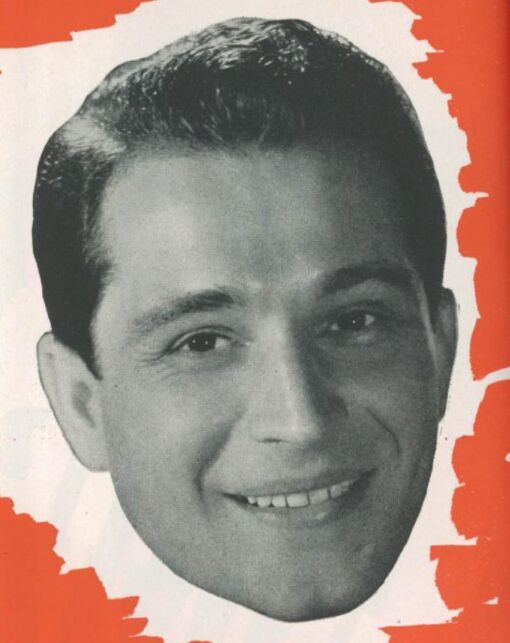
Image of Perry Como from Wikimedia Commons.
“Prisoner of Love” was originally performed by Russ Columbo in 1931, but it really took off in popularity a decade and a half later. In 1945, Billy Eckstine put out a version with Duke Ellington on the piano; a year later, Perry Como put out one of his own that charted in March 1946 and hit #1 that year. Como was given the Lifetime Achievement Award at the 2002 Grammys.
Francis Craig, already a well-known bandleader in his mid-40s, had an unexpected megahit when he recorded “Near You” and three other songs in a studio before taking a gig as a radio station music librarian. Unexpectedly, “Near You,” which was a B-side recording on the single, was a breakout hit, eclipsing 1 million copies sold in five months, and sitting atop the charts for an unprecedented 17 weeks.
It became the theme song for comedian Milton Berle's popular radio show. It also was covered by George Jones and Tammy Wynette, becoming a #1 country hit.
“Twelfth Street Rag” was composed by Euday Louis Bowman, who first published the song in 1914. However, the song was best-known as a spark of sorts, reigniting jazz musicians' interest in ragtime from the 1920s through the 1940s. The trombonist Walter “Pee Wee” Hunt recorded his 1948 version for Capitol Records, which went on to sell 3 million copies. A 1999 version of the song regularly appeared throughout the run of “Spongebob Squarepants” featuring a steel guitar and a ukulele.
Vaughn Monroe was a big band leader whose voice earned him the nickname “Old Leather Lungs.” He had a string of #1 hits throughout the 1940s, ending the decade with “Riders in the Sky”: a country Western classic that has since been recorded by everyone from Johnny Cash to the Blues Brothers.
Originally recorded by blues legend Huddie “Lead Belly” Ledbetter, the 1950 version by The Weavers is the one that topped the charts. The Weavers, a folk band based in Greenwich Village, co-founded by Pete Seeger, were the forerunners of a “folk boom” that included Peter, Paul, and Mary, and Bob Dylan.
You may also like: #1 pop song from the year you graduated high school
With music by Sidney Lippman and lyrics by Sylvia Dee, Nat King Cole's “Too Young” sold more than a million records and stayed at #1 on the charts for five weeks. Incredibly, in 1956, Cole became the first black man to host a network TV show when “The Nat King Cole Show” premiered on NBC that November. Cole died of lung cancer at the age of 45 in February 1965.
When Leroy Anderson released “Blue Tango” on a 45, it was paired with “Belle of the Ball,” which the composer expected to be the bigger hit. He was very wrong. “Blue Tango” sold more than 1 million records, becoming the first instrumental to reach gold record status. Mitchell Parish wrote lyrics for the song later in 1952.
Originally written for the 1952 film “Moulin Rouge,” “Song from Moulin Rouge” (also known as “Where Is Your Heart”) became a chart-topping hit when it was recorded by Percy Faith's orchestra in 1953. That version, sung by Felicia Sanders, topped the Billboard charts for 10 weeks. Tony Bennett credits Percy Faith as an early influence.
Originally written by Edith Lindeman and Carl Stutz, the version of “Little Things Mean a Lot” that topped the charts was recorded by Kitty Kallen in 1954. The next year, Kallen began struggling to sing live (she could still record, which led many to believe the problem was psychological). She was erroneously reported dead in 1978, before actually dying at the age of 94 in 2016.
“Cherry Pink and Apple Blossom White” is the English translation of the original French title “Cerisier Rose et Pommier Blanc,” composed by Louiguy (“La Vie en Rose”). The version that topped the charts in 1955 was released by Dámaso Pérez Prado, who recorded it for the soundtrack of the 1955 RCA film “Underwater!” In the film, the actress Jane Russell dances to the mambo hit.
You may also like: 50 ways music has changed in the last 50 years
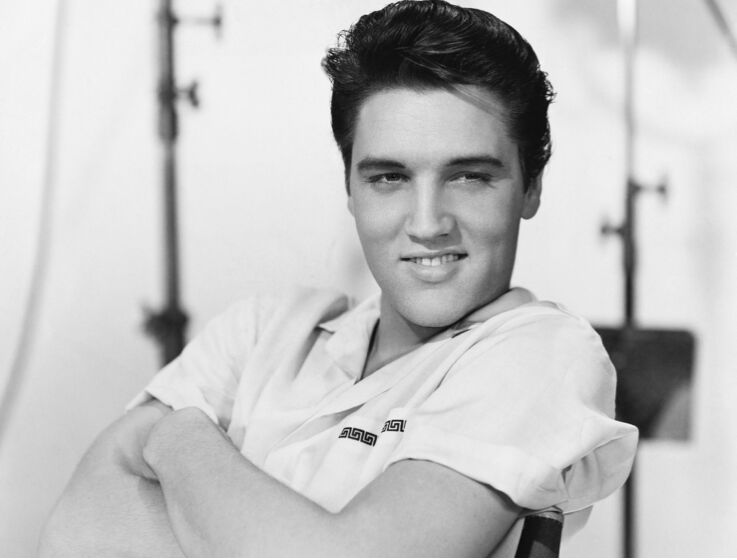
Image of Elvis Presley from Wikimedia Commons.
“Heartbreak Hotel,” written by Tommy Durden and Mae Boren Axton, was the breakout hit for Elvis Presley. A regional star at the time, Presley—under new management—signed with the label RCA Victor. In January of that year, he recorded the track that would go on to change pop music forever. When he appeared on CBS's “Stage Show” at the end of the month, the record took off, and earned Presley a spot on Milton Berle's show in April. With Berle's backing, “Heartbreak Hotel” hit #1 on the Billboard charts.
In March of 1957, Elvis Presley released a single ahead of his second feature film, “Loving You.” On the B-side was a cover of The Ink Spots' “That's When Your Heartaches Begin,” and on the A-side was “All Shook Up,” composed for Presley by Otis Blackwell. The single was a hit, selling 2 million copies and spending eight weeks in the #1 spot on the Billboard charts.
Written by Domenico Modugno and Franco Migliacci, “Nel Blue Dipinto di Blu,” better-known as “Volare” (“To Fly”), topped the charts for five weeks and went on to win the first-ever Grammys for Record of the Year and Song of the Year. The ballad was Italy's entry into the European singing contest, Eurovision, in 1958. To-date, the original Italian and many translations of the song have been sold a combined 22 million times.
Incredibly, “The Battle of New Orleans” was originally written by Jimmy Driftwood, an Arkansas-based high school principal who wrote songs to get kids interested in history. Johnny Horton recorded the song and it took off, reaching the top of the Billboard Country and Hot 100 charts. Horton died in a car accident in 1960 at just 35 years old.
Seven years after hitting #1 with “Song from Moulin Rouge,” Percy Faith returned to the Billboard charts with an even bigger movie soundtrack smash hit: “Theme from A Summer Place.” The single, an instrumental that does not even play over the film's credits, sold more physical copies than any other in 1960 and won the Grammy for Record of the Year. It is the most popular instrumental song in history.
You may also like: Boy bands to top the Billboard charts since 1980
R&B singer Bobby Lewis hit #1 on the charts in July 1961 with “Tossin' and Turnin',” his fast-paced ode to sleepless nights thinking about the woman you love. Lewis never became a giant star, but the song lived on in the collective memory, partly because of its ubiquity throughout the early 1960s, and partly because it was featured on the soundtrack of both “American Graffiti” and “Animal House.”
It was British singer Acker Bilk, not the Beatles or the Rolling Stones, that was the first musician from the United Kingdom to invade the Billboard charts in the 1960s. The jazz clarinet player's instrumental “Stranger on the Shore” was an unexpected hit in 1961 and 1962, and was even brought to space as part of the soundtrack of the 1969 Apollo 10 mission around the moon. The song's popularity spike came when it was used as the theme song for the BBC show of the same name. Bilk was sick of playing it by the end of his life.
“Sugar Shack” was written by Keith McCormack, who also gave his aunt Fay a credit because they refined the lyrics over breakfast together. “Sugar Shack” is upbeat early rock ‘n' roll through and through, and was the biggest hit for Jimmy Gilmer and the Fireballs, spending five weeks at the top of the charts in the fall of 1963. But rock ‘n' roll was about to change forever—the Beatles first arrived in America in 1964.
Capitol Records had planned to release “I Want to Hold Your Hand” in early 1964, but a Washington D.C. DJ changed the record label's plan when he played a U.K. version, unleashing the first American-based outbreak of Beatlemania. Capitol quickly printed a run of the single in response. By the time the band played "The Ed Sullivan Show” in February, the song had already been on top of the charts for seven weeks. The British invasion had begun.
The British invasion hit American pop charts like a hurricane, but, amazingly, Sam the Sham (a.k.a. Domingo Samudio) and a group of musicians dressed as Egyptian pharaohs dominated the airwaves in 1965 with party rock anthem “Wooly Bully.”
Samudio left music by the 1970s and retired into anonymity, spending years working on the crews of ships, and also never missing Chicago Bulls games when Michael Jordan was playing. The song was sung by Sean Penn as Spicoli in “Fast Times at Ridgemont High,” by Meryl Streep in “Ricki Flash,” and is used to great effect in Stanley Kubrick's classic “Full Metal Jacket.”
You may also like: 100 best albums of the 21st century, according to critics
Staff Sgt. Barry Sadler wrote the song “Ballad of the Green Berets” after suffering an injury while serving as a Special Forces medic in Vietnam. With the help of author Robin Moore, Sadler was given the chance to record the song, which became an underground hit within the military and was released by RCA in 1966. The single sold 2 million copies during its first two weeks on the market, and Sadler—who may not have been quite as squeaky-clean as the military would have liked—was seen as a patriotic symbol while performing his song on “The Ed Sullivan Show.”
The singer Lulu made her feature film debut in 1967's “To Sir, With Love,” in which Sidney Poitier plays a teacher who eventually wins over his class of misbehaving British students. Her character was meant to sing a song to Poitier near the end of the film, but she was unimpressed by the original options. Lulu talked her friend, composer Mark London, into writing the music, and songwriter Don Black penned the words.
The song was released as the B-side of a Lulu single by RCA records, but quickly became the preferred Lulu song of radio DJs: it hit #1 in October of 1967 and stayed there for five weeks.
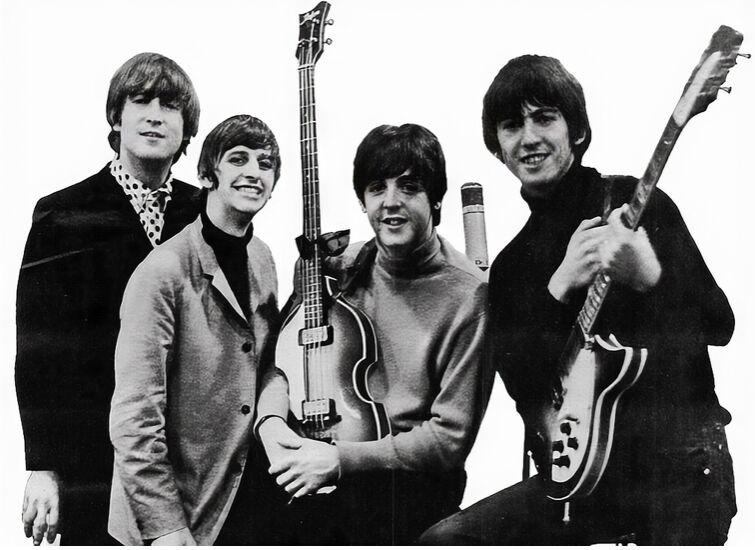
Image of The Beatles from Wikimedia Commons.
Written by Paul McCartney, “Hey Jude” has become arguably the most popular Beatles song of them all. As of late last year, it was #1 on Apple Music; when it hit American airwaves, it spent a record nine weeks on the top of the charts. Just a few months after its release, R&B legend Wilson Pickett recorded a legendary cover. A young Duane Allman of the not-yet-formed Allman Brothers Band, played guitar on the track.
Legend has it that producer Don Kirshner first offered the song “Sugar, Sugar” to The Monkees, but was met with angry protests by the band. Instead, the song was performed by studio musicians, and released as an Archies song, performed by cartoon characters on the popular TV show. The song was a megahit, spending four weeks atop the charts from September to October of 1969.
“Bridge over Troubled Water” is the title track on Simon & Garfunkel's final studio album, and though it was recorded at a tense time for the folk duo, you'd never know it listening to their legendary harmonies. The song spent an incredible 85 weeks on the Billboard charts, with 10 weeks in the #1 spot. It won Song of the Year at the 1971 Grammy Awards.
You may also like: Top 100 country songs of all time
Written by Hoyt Axton, “Joy to the World” was recorded by Three Dog Night, and released as a single in early 1971. The band had hit #1 on the charts the year before with “Mama Told Me (Not To Come),” but the success of “Joy to the World” eclipsed anything they did before or after. The song became synonymous with 1983 film “The Big Chill.” Hoyt Axton was the son of Mae Axton, who co-wrote “Heartbreak Hotel.”
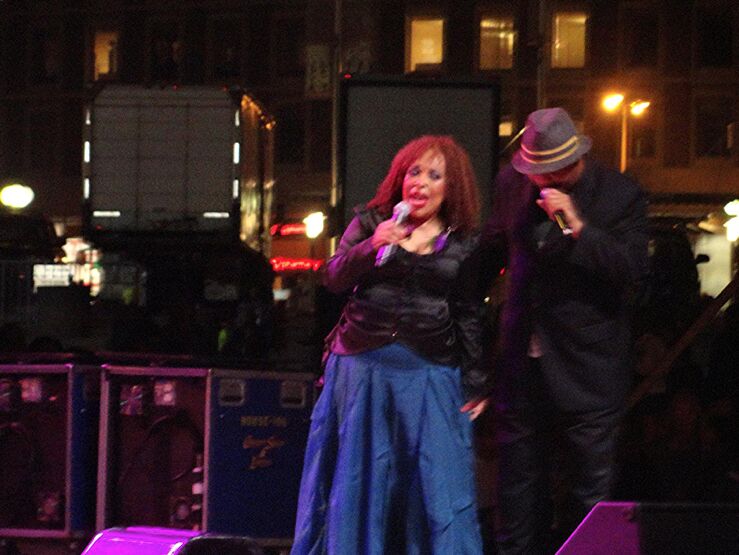
Photo by Michael Borkson, CC BY-SA 2.0 via Wikimedia Commons. Roberta Flack - legendary soulful singer-Boston, Mass.-August 28, 2013.
Originally written in 1957 by folk singer Ewan MacColl, “The First Time Ever I Saw Your Face” was often covered and recorded before Roberta Flack released her 1969 album “First Take.” Incredibly, the song didn't hit the charts until three years later, after Clint Eastwood used it in his film “Play Misty for Me.” Flack hit #1 in 1973 and 1974 with “Killing Me Softly With His Song” and “Feel Like Makin' Love,” respectively.
Written by songwriters Irwin Levine and L. Russell Brown, “Tie a Yellow Ribbon ‘Round the Ole Oak Tree” tells the story of a man anxiously searching for his wife at the agreed-upon spot on the day of his release from prison. The song, recorded by Tony Orlando and Dawn, was such a hit—spending four weeks atop the charts—that the yellow ribbon signifying a missing person soon became a ubiquitous symbol across America.
Barbra Streisand's “The Way We Were” was released as a single in 1973, right before her film of the same name hit theaters. “The Way We Were” topped the charts for two weeks in March 1974, right before winning Best Original Song at the 1974 Academy Awards that April. Rolling Stone reviewer Jon Landau—in a not especially kind review—credited the “fluke success” of the song with reviving Streisand's music career.
Daryl Dragon was a classically trained pianist who preferred rock ‘n' roll and the blues. He backed up Fats Domino and The Beach Boys, and earned his nickname “Captain” because of the hat he liked to wear on stage. He and wife Toni Tennille put out their biggest hit in 1975: “Love Will Keep Us Together.” The song hit the charts in June, and stayed at #1 for four weeks.
You may also like: 30 of the top-grossing music tours of all time
After Paul and Linda McCartney's band Wings was attacked by critics as “a waste of Paul,” the ex-Beatle responded by releasing “Silly Love Songs” on the 1976 “Wings at the Speed of Sound.” The album itself was a mixed bag, but the indignant, yet self-effacing single was a critical and commercial hit, topping the charts in May of 1976. McCartney became the first artist to hit #1 as the frontman of two different bands.
Rod Stewart, former singer of both the Jeff Beck Group and The Faces, put out “A Night on the Town” as a solo artist, and it was his first to go platinum. The biggest song on the album was “Tonight's the Night (Gonna Be Alright),” which hit #1 in November 1976 and stayed there for eight weeks (the longest run atop the charts since “Hey Jude”). His girlfriend at the time, Swedish actress Britt Ekland, does “a little naughty whispering” in French near the end of the recording.
Andy Gibb was the heartthrob younger brother of The Bee Gees (Barry, Maurice, and Robin Gibb), and had three songs hit #1 in less than a year. The last of the three, “Shadow Dancing,” first topped the charts in June 1978 and held the top spot for seven weeks. All four Gibb brothers wrote the song, and Barry Gibb-written songs completely dominated the airwaves that year.
The Knack's debut single, “My Sharona,” was released by Capitol Records in June and topped the Billboard charts by the end August, holding the vaunted position for six weeks. Lead singer Doug Fieger wrote the song about his ex, Sharona Alperin, who was 17 when she caught the eye of 25-year-old Fieger. He said the lyrics were written from the perspective of a 14-year-old boy.
Written as the theme song for the great Paul Schrader’s (“Taxi Driver”) 1980 film “American Gigolo.” Giorgio Moroder, who was doing the score for the film, initially approached Stevie Nicks with the bones of the song, but when she passed, he brought it to Debbie Harry and her new wave band Blondie. The song was the band’s second number one hit (after 1979’s “Heart of Glass”) and became its biggest hit. It was on the charts for 25 weeks, and at number one for six.
You may also like: Most famous musician born the same year as you
The song “Bette Davis Eyes” was originally recorded by Jackie DeShannon for her 1975 album “New Arrangement.” But it was another new arrangement, by Kim Carnes for her 1981 cover of the song, that made “Bette Davis Eyes” a hit. Carnes' “Bette Davis Eyes” hit #1 in May 1981, and spent 26 weeks on the chart with nine weeks at the top.
Written by Steve Kipner and Terry Shaddick, Olivia Newton-John's “Physical” was a sexy and surprising turn for the “Grease” star. The video, which features Newton-John in a men's locker room, was lampooned on the first-ever episode of “Beavis and Butt-Head.” The song spent an incredible 10 weeks at #1 from the end of 1981 through 1982.
Written by Sting in the wake of the dissolution of his first marriage, the Police frontman explained “Every Breath You Take” as a “nasty little song” about a stalker wanting to reclaim his love. The song was rarely read as dark as by the band's frontman, instead becoming a breakaway hit, and spent eight weeks at #1. It was the band's only #1 hit; they broke up at the peak of their prowess in 1984.
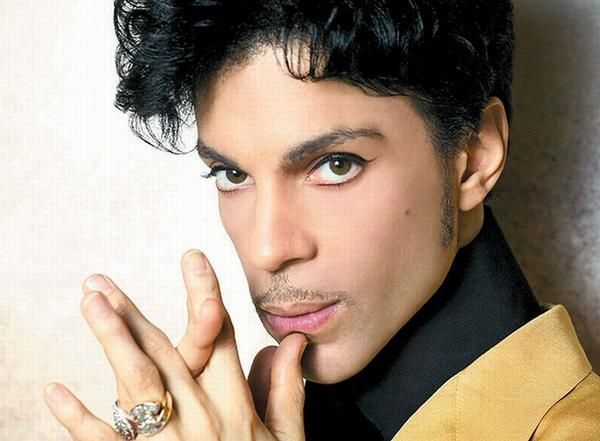
Photo by World's Direction from Flickr. Prince Rogers Nelson.
Prince's second album, the self-titled “Prince,” went platinum in 1979, but it was his 1984 “Purple Rain” (which coincided with his feature film debut) that helped create the Prince legend. “When Doves Cry” was the first single off the album, reaching #1 on the charts in July and spending five weeks in the top spot.
Released by Wham!—the name of George Michael and Andrew Ridgeley's English pop duo—“Careless Whisper” was far from Michael's favorite song. Part of the reason for his disdain was that the song was written by Michael and Ridgeley when they were just 17, and came to define much of their career. Michael put out eight #1 hits, but none bigger than “Careless Whisper.” Whatever his feelings, the public disagreed—the song hit #1 in 25 countries, and made George Michael a global star.
You may also like: Can you answer these real 'Jeopardy!' questions about music?
Originally written by Burt Bacharach and Carole Bayer Sager, the song “That's What Friends Are For” took on new meaning when it was recorded by Dionne Warwick, Elton John, Gladys Knight, and Stevie Wonder. The song was released as a charity single to raise money for AIDS research and became a massive hit, reaching the top of the charts in January 1986, and eventually raising more than $3 million for the cause. It also won the Grammy for Song of the Year.
The song “Walk Like an Egyptian” was written by Liam Sternberg and brought as a demo to Toni Basil, who passed. It eventually was sent to The Bangles' producer, who thought it was a perfect fit for the band's second album. The album was a hit, with “Manic Monday” (written by Prince under the pseudonym Christopher) reaching #2 on the charts. “Walk Like an Egyptian” grabbed the top spot in December 1986. Besides “Monday” and “Egyptian,” almost all The Bangles' songs were written by the band. The group had another #1 hit in 1989.
“Faith” was the title track from George Michael's first solo album—one of the biggest solo debuts of all time. The lead single, “I Want Your Sex,” peaked at #2, but the four singles that followed, starting with “Faith,” hit the top spot on the Billboard charts. Michael's album sold more than 10 million copies in America, vaulting him to the upper-echelons of 1980s pop stars. Michael won the Grammy for Album of the Year for “Faith.”
Chicago's producers tapped legendary songwriter Diane Warren to help write this hit. She did just that with “Look Away,” which hit #1 in December 1988| and stayed on the charts for 24 weeks. Warren is an incredible behind-the-scenes figure in pop music; she's penned #1 hits for Toni Braxton, Celine Dion, Milli Vanilli, Aerosmith, and Brandy, among others.
Wilson Phillips was an all-woman band that took the world by storm in 1990. Started by sisters Carnie and Wendy Wilson, and childhood friend Chynna Phillips, the band's debut album “Wilson Phillips” sold 10 million copies. “Hold On,” the album's most popular song, hit #1 on the charts in June of 1990. The band made a cameo at the end of the comedy “Bridesmaids,” playing “Hold On” at the wedding reception.
You may also like: 30 musicians with legendarily long careers
The power ballad by Bryan Adams was released on his 1991 album “Waking Up The Neighbors,” as well as part of the soundtrack for the 1991 Kevin Costner film “Robin Hood: Prince of Thieves.” Adams lost some rocker credibility with the melodramatic megahit, but he also made a fortune: “(Everything I Do) I Do It for You” topped the Billboard charts for seven weeks and sold 15 million copies. He also claims he wrote the song in less than an hour.
The harmonizing R&B act Boyz II Men released “End of the Road” as part of the soundtrack for the Eddie Murphy film “Boomerang.” The song took off, vaulting to the top of the charts in August of 1992, and staying there for a record-breaking 13 straight weeks. The quartet of Michael McCary, Nathan Morris, Wanya Morris, and Shawn Stockman followed “End of the Road” with four more #1 hits in the 1990s.
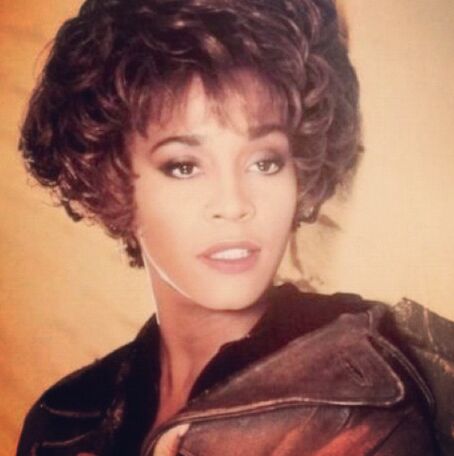
Image by Nisakorn Keanmepol from Flickr. Whitney Houston.
“I Will Always Love You” was originally written and recorded by country legend Dolly Parton, and the song hit #1 on the Billboard Hot Country Songs list twice, in 1974 and 1982. But it was Whitney Houston's cover for the soundtrack of the 1992 film “The Bodyguard” that became the megahit. The song stayed #1 on the Billboard chart for a record-breaking 14 weeks. Parton said she was “shattered” when she heard “I Will Always Love You” played at Houston's funeral in 2012.
Swedish pop band Ace of Base burst onto the scene in an unprecedented fashion. Its debut album (sold in America as “The Sign”) featured three top-five Billboard hits, including “The Sign,” which grabbed the #1 spot for six weeks beginning in March 1994. The Swedish quartet—Ulf Ekberg and three siblings: Jonas, Linn and Jenny Berggren—arrived right at the moment Sweden would become a force in pop music.
“Gangsta's Paradise” was released as part of the soundtrack for the 1995 Michelle Pfeiffer film “Dangerous Minds,” as well as on rapper Coolio's album “Gangsta's Paradise.” The song tells the story of regret and anger from a narrator stuck in a life of crime, and features singer L.V. It topped the Billboard charts for three weeks starting in September of 1995; the film came out the month before. “Gangsta's Paradise” was the first-ever rap song to land atop Billboard's year-end Hot 100 list.
You may also like: 30 pop songs you may not know are covers
Perhaps no song is as unlikely to grab the top pop song of the year mantel than “Macarena (Bayside Boys Mix).” The original version of the Latin dance megahit was written and recorded by aging Spanish pop duo Los del Río (Antonio Romero Monge and Rafael Ruíz Perdigones) in 1993. But it was a 1996 remix by the Bayside Boys (Mike Triay and Carlos de Yarza) that took the world by storm. Incredibly, the song, with its built-in dance routine, hit #1in August 1996 and stayed there for 14 weeks. The “Macarena” was danced at weddings and bar mitzvahs for years to come.
In 1997, less than a month after Princess Diana's untimely death, Sir Elton John put out a double A-side single with “Something About the Way You Look Tonight” on one side and “Candle in the Wind 1997.” The latter was a recording of his 1973 classic that he sang at the royal's funeral, with a line altered to refer to “England's rose”—on the other. The single solda record-breaking 33 million copies, raising £38 million for Diana's charities. The unlikely double single—on the strength of a live recording of a song that had been written and recorded 26 years before—was #1 on the charts for 14 weeks.
In a year when the best-selling album was the soundtrack from “Titanic,” it's a small miracle that an innuendo-laden love song by an R&B group was name the pop song of the year. The group Next—fronted by R.L. Huggar alongside brothers T-Low and Tweet Brown—released “Too Close” on their debut album “Rated Next.” The song spent 53 weeks on the charts, with five at the top spot starting in April 1998. The version that charted and played on the radio for years does not include the R-rated opening monologue that casts the entirety of the song's innuendo in a much clearer light.

Photo by David Carroll from Flickr. Cher.
Following a slightly down period (her 1995 album sold only 700,000 copies), Cher released “Believe”—a dance-your-way-through-a-breakup anthem. Incredibly, the song peaked at #1 in March 1999, 22 years after her first #1 hit. The song was the first to bring autotune to pop music, and has become an enduring gay anthem.
Faith Hill was already a major country star, but the success of “Breathe” turned her into a mainstream pop star in her own right. The song, which peaked at #2 on the charts in April 2000, was an enduring hit through the year, spending 53 weeks on the Billboard charts. Later that year, Hill hit the road with husband Tim McGraw on their Soul2Soul Tour. The 63 shows brought in $50 million.
You may also like: Song of the summer the year you graduated high school
Somehow, in a year that gave us “Bootylicious,” “Get Ur Freak On,” and “Izzo (H.O.V.A.),” it was “Hanging by a Moment” by contemporary Christian rock band Lifehouse by the end of the year. Similarly to “Breathe,” “Hanging by a Moment” never grabbed the #1 spot, but it had chart endurance, listed for 54 weeks. The aughts bore witness to an awakening of Top 40 Christian rock.
“How You Remind Me” was the single off the Canadian band's third studio album, and it changed everything. It skyrocketed to the top of the charts and stayed there for four weeks. Nickelback has since become somewhat of a punchline, but it should not be forgotten that Nickelback was a big deal in the early aughts.
50 Cent made a stir with two notable releases—“How to Rob” and “Ghetto Qu'ran”—before being signed to Interscope with the backing of Eminem and Dr. Dre. When his first album “Get Rich or Die Trying” came out in February 2003, it took the world by storm. With iconic beat after iconic beat and Dr. Dre's production, the album was a mainstream rap revelation. “In Da Club” hit #1 in March 2003 and stayed there for nine weeks. At the end of May, 50 Cent and Nate Dogg's “21 Questions” also took a turn holding the top spot on the Billboard charts.
Usher's “Confessions,” the iconic record that has sold more than 10 million copies, nearly went to the presses without its most popular song: “Yeah!” Producer L.A. Reid told Usher that his album lacked a single and sent him back to the studio with fellow Atlantans Lil Jon and Ludacris; the three returned with one of the great club hits of all time. The song hit #1 at the end of February and stayed there for 12 weeks. In May, “Burn” also topped the charts with an eight-week run.
After two less-successful albums and the ill-conceived feature film “Glitter,” Mariah Carey was in need of a comeback. Her 2005 album “The Emancipation of Mimi” became her highest-selling album, passing both “Daydream” and “Music Box,” her megahits a decade before. The album's single, “We Belong Together,” remains one of Carey's favorite songs, and spent 14 weeks on top of the Billboard charts.
You may also like: Best-selling album from the year you graduated high school
Canadian musician Daniel Powter's “Bad Day” was a perfect earworm, and became inescapable in 2006. The song became the theme for Coca-Cola's ad campaign in Europe and became a recurring bit on “American Idol's” fifth season. The song spent five weeks on the top of the charts in spring of 2006. Unfortunately for Powter, he was also named “The One-Hit Wonder Artist of the Decade” at the end of 2009.
Written by Ne-Yo and producers Stargate, “Irreplaceable” was initially conceived as a country song with Faith Hill or Shania Twain in mind. But when Beyoncé heard the demo, she wanted it, and made it all her own. The song was the third single off her second solo album (“B'Day”) and spent 10 weeks in the top spot on the Billboard charts. It's hard to even imagine another singer delivering the song's iconic “To the left, to the left."
Co-written by T-Pain, “Low” was the debut single from Flo Rida, and instantly became a massive hit. After hitting #1 at the beginning of 2008, “Low” spent 10 weeks in the top spot. Ten years later, a Twitter user hypothesized that the “shawty” detailed in the song is actually a centaur. For what it's worth, T-Pain tried his best to debunk the theory via Twitter.
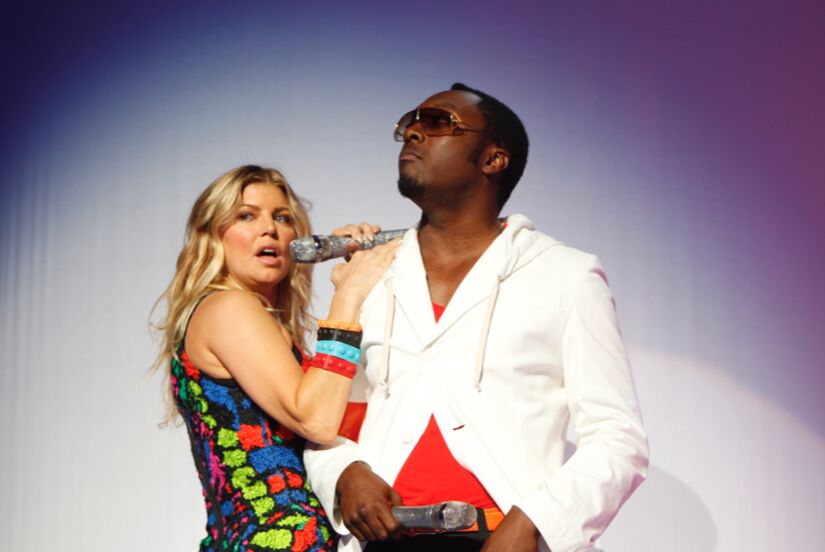
Image by Walmart from Flickr. The Black Eyed Peas Singing at Walmart Shareholders Meeting 2011.
“Boom Boom Pow”—the lead single off the Black Eyed Peas' fifth album “The E.N.D.”—became the group's first #1 hit when it topped the charts in April 2009. The infectious dance hit spent 12 weeks in the top spot; the album's second single, “I Gotta Feeling,” hit #1 in July and stayed on top for 14 weeks. With “The E.N.D.,” the Black Eyed Peas proved they were ahead of the game; or in the words of Fergie, “so 3008” to the rest of the industry's “2000-and-late.”
The first single from Ke$ha's first album, “Tik Tok” was a sensation. The dance song tells the story of a wild party girl and is best remembered for the iconic image of brushing her teeth with Jack Daniels. The song spent nine weeks at #1 in 2010, making Ke$ha a star. It should be said that the song was a collaboration with Dr. Luke, who Ke$ha sued in 2014, alleging sexual, physical, and emotional abuse.
You may also like: Most successful musical artists of all time
When Adele's “Rolling in the Deep” started playing on the radio, it was a revelation. The young singer's voice was powerful, and her second album, “21” proved to be both a critical and commercial force. “Rolling in the Deep”—called “one of the biggest crossover hits of the last quarter-century” by The New York Times—spent seven weeks at #1 during an incredible 65-week run on the charts. Her album “21” sold a nearly unprecedented 31 million copies worldwide; a mark even more impressive in the age of YouTube.
The unlikely hit “Somebody That I Used to Know” was first released in Australia and New Zealand in July 2011 before getting an American release in 2012. The catchy art pop tune vaulted up the charts, landing at #1 at the end of April 2012 and staying there for eight weeks. The song's music video—featuring Gotye and singer Kimbra naked and covered with body paint—was a sensation. To date, it has almost 1.2 billion views on YouTube.
Hip-hop duo Macklemore & Ryan Lewis spent $5,000 to shoot a video for “Thrift Shop,” the single off their 2012 debut album “The Heist.” The video's huge success—it's been viewed almost 1.3 billion times on YouTube—helped make “Thrift Shop” to become the first song to hit #1 since 1994 without the backing of a major label. The duo swept the rap categories at the Grammys in 2014, beating out Kendrick Lamar, which was viewed as unconscionable by hip-hop fans.
Pharrell Williams was instrumental in creating the sound of the 2000s, but it was an unlikely collaboration that finally landed him on the top of the charts as a solo act. Williams had worked on music for the first “Despicable Me,” and was brought back on by Illumination CEO Chris Meledandri to write a peppy hit for the sequel. Williams's “Happy” was that and more, becoming the pop hit of the year and spending 10 weeks at #1 on the Billboard charts.
Though many remember “Uptown Funk” as a Bruno Mars megahit, it was a song by the producer Mark Ronson that featured Mars. Whatever the case, the throwback beat and pop production made “Uptown Funk” a sensation—it held the top spot for 14 weeks, and the video has been viewed on YouTube 3.48 billion times. Ronson has worked with Lady Gaga, Amy Winehouse, Adele, and Miley Cyrus, among many others. Over his career, he's won Grammys for both “Uptown Funk” and Winehouse's “Rehab.”
You may also like: Iconic one-hit wonders over the past 50 years
Initially written by Ed Sheeran for his own hit album “Divide,” the English singer instead gave the song to Justin Bieber, who released it as a single. Bieber was in the midst of a string of bad-boy behavior and run of public relationships, so “Love Yourself” quickly took on new meaning (and became a favorite target for internet detectives).
Though Ed Sheeran passed #1 hit “Love Yourself” along to Justin Bieber the year before, the British singer put out a #1 hit of his own in 2017: “Shape of You.” Sheeran released two lead singles for his album “Divide” and, for the first time ever, both debuted in the Billboard top 10, with “Shape of You” at #1. His subsequent tour of the album set an all-time record, grossing more than $432 million in the calendar year.
In the age of streaming, Drake is king. The Toronto rapper mixes addictive beats, quotable lyrics, and meme-worthy videos with great finesse, leading him to the top of the music industry. In 2018, his album “Scorpion” was streamed 8.2 billion times on Spotify. It also delivered two iconic videos: “In My Feelings” (which launched a viral dance meme) and “God's Plan.” During the latter, Drake gives out $1 million in cash. “God's Plan” spent 11 weeks at #1 on the Billboard charts.
Lil Nas X and Billy Ray Cyrus’ “Old Town Road” spent 19 weeks in the Billboard Hot 100 top spot and 17 weeks as #1. The country rap song became an internet phenomenon thanks to a viral dance routine, which then translated into real-world, monetary success. There were a number of remixes of the song featuring various notable artists, but none were quite as successful as the original.
“Blinding Lights” represents one of the most streamed songs on Spotify ever, racking up nearly three billion plays. The song also yielded several successful remixes, including by the electronic group Major Lazer and Rosalía.
Despite this massive success, The Weeknd was not nominated in a single category at the 2020 Grammys, sparking controversy and anger amongst the artist’s fanbase and the industry. The Weeknd responded to the snub by calling the Grammys “corrupt” and demanding “transparency.”
Funk and disco influences made Dua Lipa’s “Levitating” a dancey, feel-good favorite, and served as a starting point for her sophomore album “Future Nostalgia.” A remix featuring rapper DaBaby, which added a rap verse, boosted the song to even greater popularity, garnering over a billion Spotify streams, although radio stations began pulling the remix after DaBaby was condemned for making homophobic comments during a concert. Controversy around the hit song continued when Dua Lipa was hit with two copyright infringement lawsuits by bands alleging aspects of “Levitating” were lifted from their songs.

Image by Erin Mc from Flickr. Harry Styles - St. Paul, MN 7/1/2018.
As of today, "As it Was" by Harry Styles sits at the top of the Billboard Hot 100. The song rose to the number one position from the number two spot last week. But it had already topped the chart previously, trading places with Jack Harlow's "First Class."
Styles path to stardom began with auditioning for X-Factor, to becoming a member of One Direction, to finding his current stardom as a solo artist. He is the winner of the 2021 Grammy Award Best Pop Solo Performance for "Watermelon Sugar." Styles has captured legions of fans, bringing to the table not only vocal talent, but a unique brand of fashion and charm.
This article from Stacker has been lightly edited and updated. It has been re-published pursuant to a CC BY-NC 4.0 License.